I was perhaps half-way through my first run with the Pace 2 after they enabled running power when I realized what COROS had just done. They’d just made a simplistic choice for people: Buy a Stryd running power meter for $219…or buy the COROS Pace 2 with virtually indistinguishable running power values for $199 – also, for free you get a GPS multisport watch built-in that tracks swims, rides, weightlifting sessions, and countless other features.
In other words – COROS got their groove back.
While COROS began the company making connected helmets, they really got their wearable feet making the original Pace. After that, they shifted to higher-priced watches, though, without really adding in the higher-priced features, like streaming music providers or contactless payments, that justified those prices. With the Pace 2 though, they’re back at it – releasing what is arguably a killer watch at a killer price. In other words, they’re back doing what they do best: Being an industry disrupter.
But it’s not just running power, the unit has numerous other new features – including claims of being the lightest GPS watch in the world (29g), a new night workout mode, new training plans, longer battery life (always been COROS’s secret sauce), and plenty more.
I’ve been testing the COROS Pace 2 since mid-summer across a variety of terrain and I’m just about ready to publish an in-depth review (probably as soon as next week). However, until then, here’s a quick look at everything that’s new.
What’s New:
The COROS Pace 2 carries with it almost every feature found on the company’s higher-end watches, save a handful of features targeting the high mountains such as an SpO2 sensor (hardware), mountain climb mode, ski mode, and trail running mode. Though realistically, you can use running mode just fine for trail runs.
Still, the fact that a $199 watch has essentially all the same software as those higher-end watches is astonishing. And, before owners of those higher-end VERTIX, APEX, and APEX Pro units worry, yes, you’re getting all the same features of the new PACE 2 via software update (in fact, even the original PACE will get wrist power, but not the other features). COROS continues to follow the general model of Apple, Wahoo (and now Hammerhead) with keeping units on essentially the same software version as long as hardware allows for it.
Here’s what’s new in the Pace 2 specifically:
– Addition of running power without any accessory
– Addition of Stryd running power support with all metrics
– Expanded running power platform support (metrics/integration/etc…)
– Added running power targets to structured workouts
– Addition of training plans
– New night mode for workouts: Automatically enables backlight during workouts between sunrise and sunset
– Increased battery life from 25 hours to 30 hours of GPS on-time in regular mode
– Increased battery life from 50 hours to 60 hours in UltraMax mode
– Reduced standby battery from 30 days to 20 days (but with 24×7 mode with notifications/sleep tracking/HR tracking/etc…)
– Reduced weight from 48g (Pace 1) to 29g (Pace 2)
– Claimed lightest GPS watch in the world at 29g
– Processor capabilities increased by 1.5x
– Storage capacity increased from 16MB to 64MB
– New quick release bands (previous required tools)
– Reduced from 4 buttons to digital dial + button
– Watch size decreases from 46mm to 42mm, but screen size same at 1.2”
And then here’s some things that stayed the same:
– Still a full multisport watch with triathlon mode
– Still supports external sensors including ANT+ & Bluetooth Smart sensors
– Still has training plan, structured workouts
– Has magnetic compass
– Has barometric altimeter
– Water-resistance stays at 5ATM (50 meters)
Here’s a look at that new nylon strap – which is what I’ve been wearing with it. I quite like it:
You’ll notice the digital dial in there, which replaces some of the dedicated buttons. Digital dials honestly aren’t my favorite thing for sports watches, and that’s true here as well. I find them super finicky for changing data pages mid-run (and near-impossible while riding), and that carries through to the Pace 2 also. I’ll miss the dedicated buttons of the original Pace.
Finally, there’s two colors (white or dark navy) available at launch – with either the nylon or silicone band:
Ok, with that, we’re going to dive straight into the main bit of newness here – the running power. All the other features already exist on higher-end COROS watches. So while I’ll cover this in my final in-depth review, I wanted a standalone section for the newer running power aspects.
Running Power:
While COROS has implemented running power natively into the COROS Pace 2 (akin to what Polar did with the Polar Vantage), they’ve also dramatically stepped up their running power support in general, via an increased partnership with Stryd. As part of that, they now support every Stryd running metric when paired with a Stryd pod – from Form Power to Air Power, plus all the running efficiency ones like Ground Contact, L/R Balance, and more. In addition, the COROS Pod gains all but one of these metrics as well.
But if you’re looking for the main metric of running power, that doesn’t require any pod at all – either COROS Pod or Stryd. You can just use the watch on your wrist like a normal human and it’ll give you total power as well as smoothed variants of that (based on the data fields you choose). And you can create structured workouts based on those power targets too.
Now, we’ll circle back to the nuances of wrist-only vs Stryd footpod vs COROS Pod in a moment. Until then, let’s look at the running power bits on an actual run. To do so, you’ll want to ensure you’ve got the running power data fields configured/enabled on your watch, via the smartphone app. In my case, I configured them similar to how I do my cycling power, with different smoothed variants:
Randomly of note, COROS is removing the ‘Running Efficiency’ metric and original running power analysis from their app. The other metrics will remain the same (while it adds the new FORM Power metric when paired with either COROS or Stryd pods).
Also – if you’re pairing up a Stryd pod, then you’ll get to add all the Stryd data fields too, like Air Power. And if using a COROS Pod, then you’ll get fields like Vertical Oscillation you can add.
And at that point, you’re basically ready to run. So go ahead and choose to start a run and wait for satellite and heart rate lock. Both typically only took a few seconds.
Now, start running. You’ll see your running power displayed per your configurations, such as below from my run last night:
In my case though, for my recent runs I’ve upped the ante and brought out various comparisons, specifically the following setup:
– Left wrist: COROS Pace 2 with native wrist power
– Right wrist: Polar Grit X with native wrist power
– Foot: Stryd Air footpod for running power
– Chest Strap & Running Shorts: Garmin HRM-TRI & RD-POD for running power
So in essence, I’ve tracked all four across numerous runs to see how they track. And it’s fascinating. The Stryd and COROS Pace units tracked near identically. Some minor differences here and there, but run after run the values shown on the displays were almost scary close.
And after the fact, the data supports that as well. Here’s those four plotted from last night’s run, which was steady-state for the first 5KM, and then 800m intervals for the next 5KM. The COROS and Stryd are lower down in purple/brown:
Now, as I’ve pointed out countless times before with running power data – this does not mean COROS & Stryd are right. It just means they agree. As with numerous other running power products on the market, this is not standard for how to measure running power. It might sound like a silly thing, but there really isn’t any agreement there from scientists, let alone companies. At this point, it’s mostly more about consistency within a given unit than anything else.
Garmin, Polar, RunScribe, and others tend to take a different approach to the data than Stryd (and now COROS). Usually it’s noted that if you add the Stryd Form power value to the Stryd power value you get into the same ballpark as Garmin/Polar (though even that is variable). You can see this below by looking at the lowest line that hovers around 100w (Stryd Form Power):
In any event, if we look at another run I did (which includes going up/down some hills), you’ll see the COROS & Stryd are again nearly identical, with the COROS data smoothed a bit more. And in fact, I generally found the COROS power data a bit slower to respond than the other units, and you can see that both above and below near some of my surges.
Note that for the image directly above here, I did have Garmin’s running power enabled, but forgot to put a new battery in my RD Pod, so it dropped out constantly until it died. Whereas on my earlier run I used the HRM-TRI.
Finally, I’ve just added in another run – this one on a crazy windy day. Winds were sustained at 30KPH, and gusting to 50KPH. I did this on a track, which is fun for a lot of reasons. First, because the wind was consistently either head-on or tailwind (aligned to the straightaways, making it easy to spot). Second, I was doing 800’s, and as you can see, my pacing is rock-on consistent. Variations in power were largely due to gusts (and probably a bit of running form change over time due to the wet surface). Note, the COROS Pace 2 was in track mode (so, still using GPS, but ‘locks’ to the track shape). The workout was primarily 800’s, with 200’s easy in between. Then some 200 sprints at the end.
First, here’s all four power sources at once (Stryd Air Power, COROS Pace 2 wrist-based power, Polar Grit X power, Garmin Power via HRM-TRI), data set here:
Pretty similar to what we’ve seen before. Let’s go ahead and remove the Garmin/Polar ones, since people most want to see/understand the implication of the wind, and Stryd’s Air Power accounting for that.
Looking at the first 1600m, there’s virtually no difference whatsoever. That’s the warm-up session (I did a warm-up from office to track as well, so this was the on-track warm-up). Remember, each time I looped the track I’d encounter the strong headwind and the strong tailwind, plus the crosswinds at both ends.
These were roughly done at ~6:05/mile (about ~3:45/KM). Nothing crazy, was more focused on keeping them super consistent. And you can see from the speeds, they were. Here’s the Stryd Power Center data from the pod showing the blue line of how stable I was:
And here’s the data from the Garmin Fenix 6 showing the same stability using the GPS/wrist-based hybrid for pace (despite claims to the contrary, all major vendors use a blend of GPS + wrist-based accelerometers for smoothing pace data).
Again, wind-speed measured a few blocks away at the weather station was ~30KPH sustained, with gusts to 57KPH (I started at ~4PM).
So let’s look at the 800’s more closely from a power standpoint. I’d start a jog about 10-12 seconds prior to each one, arriving at the line and hitting lap at that point on-pace. Since I was jog/walking 200’s in between, it meant that I was alternating whether I’d hit a headwind or a tailwind first for each set.
And what do we see above? Relative consistency, but no specific repeatable differences between them. For example, they both trend relatively similar, but also have unique differences. But those differences don’t actually appear related to the wind. Here, let me show you. Below is from Stryd Power Center. On the map to the right I’ve illustrated the wind direction with the red arrows, and then my running direction around the track with the blue arrows. The little white splotches in the corner are where I started each set of 800m. So I’d always start on a corner, and then either hit headwind or tailwind.
Now, let me add in the grey shading of Air Power to the Stryd chart:
It’s hard to see, but it’s the grey under the orange bits. Here’s the 2nd interval zoomed in on, as we’ll use that for comparison:
So let’s look at the comparison of just that interval, since there’s both similarities and differences there. Note the above/below charts don’t precisely match sizing. Also, my annotations aren’t perfect to the second because I’m trying to match things up on the map on the track – but they illustrate the gist of it pretty well.
You see that the Stryd seems to spike slightly higher as I start the interval – logical since as I’ve shown above, the COROS Pace seems slightly more smoothed. Like most people, the first couple seconds I tend to start a touch bit fast and then settle in by 5-8 seconds in. As I hit the first tailwind, both units decrease correctly. And then, as I hit the first strong headwind, both units rise correctly together. So despite a Stryd Air Power factor showing 8% for this 100m section, COROS Pace 2 power matches the power perfectly. In other words, having a wind sensor made no difference there.
Then we hit the section labeled ‘Side’ above. In this case the two units disagreed. This end of the track is a spot that’s semi-protected by a small line of trees/fencing. Stryd believes the wind here was strong at 5-7%. I’m guessing it’s misreading that. It was raining outside, and perhaps the sensor hole got some droplets in there. I’m not sure, but I am sure there’s no headwind there (as it correctly showed on most other laps). Also, given I was just coming off the headwind, it’s unlikely I double-down on power again. If you scroll up to the Garmin/Polar power, neither show the Stryd spike there.
Anyways, onto tailwind section #2, and both are the same. And then into headwind section #2, both rise up, with the COROS actually rising higher a little bit (Stryd reported a wind factor of 8% again for that portion). Following which you see the Stryd power cut-out quicker than COROS, which takes a few more seconds after I stop to cut-out (again, the smoothing I discussed earlier).
This cycle repeats essentially the same for all of these sets. The exact variations differ, but it seems pretty darn clear there’s no meaningful difference in these from an on the run pacing standpoint. Like most running power products, they both are somewhat variable in the actual values second to second.
So what about the 200m sprints? Ask and you shall receive. In this case, I started all of them in the same spot – which was with a sidewind followed by a tailwind. Then 200 easy in between. You can see some moderate variance, namely after the first interval.
You see the slight bit of delay on the COROS Pace 2 power values for Interval #1, though Intervals #2/3 are only about a second behind. Interval #4 (which I ran the fastest of them across the entire interval) was virtually identical in responsiveness. Meaning, COROS appears to smooth less when the change is more sprint-like (whereas an easy roll into an interval means it smooths more).
On intervals #2/3 Stryd spikes quite high above COROS towards the first 1/3rd of each interval. I was curious if Garmin/Polar also did this, and they do to an extent – Garmin more so than Polar (relative to the baseline for the rest of the interval). I’m not really sure what to make of that. And honestly, I’m also not really sure who (if anyone) is using power to pace 200m intervals, as realistically time/pace is a better indicator there given the variability of power over such a short timeframe.
Ultimately, what my windy day at the track showed me is that there was no obvious (or even non-obvious) benefit to an air pressure sensor over what COROS has come up with. In the handful of times they differed (such as on one of the curves) – I don’t think the Stryd was correct there anyway. And then inversely, in the case of the 200m sprints, I don’t think the air pressure sensor specifically was a notable factor, rather, the fact that algorithms are accounting for accelerations differently.
Now, for comparison COROS put together a pretty detailed chart comparing the different options. I then layered in a few more line items, and added the Polar units to it as well. I will point out I appreciate that over the years COROS is always astonishingly accurate in their competitor comparison charts, they don’t tend to be heavily skewed towards them (nor omitting competitors’ features). In other words, I rarely have to take out the red marker and make corrections to it.
Ultimately at this point I’d have a really hard time with digesting why I’d need/want another pod. Sure, there’s more metrics to be found – but I feel like with as many years down the road we are on the running power journey, there *still* isn’t clear guidance for using those other metrics to train or race faster. At least from a purely metric-driven standpoint.
Stryd has other aspects of their platform that would drive adoption, like their race power calculator platform and sync process, which allows you to put in the course for your race and it basically spits out a running-power driven race plan. That’s cool.
Or their entire Stryd Power Center dashboard, which allows you to do more detailed analysis of your runs from a running power standpoint.
But realistically, most people are going to stay watch-based when it comes to power. Meaning, they probably aren’t going back to the Stryd dashboard every day, aside from casual looks. It is notable that upon launch you’ll be able to pair a COROS & Stryd account together on the back-end.
In fact, as I got to this point in the post I started to wonder if COROS bought a financial interest in Stryd, or acquired them. Because frankly there’s no logical reason why Stryd would agree to all this, as at this point there’s very little reason for most people to buy a $219USD Stryd sensor if you’ve got a COROS watch.
So…I asked.
And COROS says that they do not have any financial interest/stake in Stryd. Further, they said that all of the wrist-based running power work they did was entirely by themselves, as Stryd wasn’t even aware of the wrist-based running power coming to COROS units until the day of the dry run broadcast presentation with COROS. COROS says that the two companies are both smaller, and the synergies of ensuring both products worked well together was the main driver for increased Stryd integration.
Speaking of that integration, if you do decide to add a Stryd pod, you’ll find some handy features. First off though, add it through the ANT+ sensors menu like normal, except you’ll see Stryd listed once it finds it:
The first thing it’ll ask after you select it is for your critical power, which you can find via Stryd’s app/site:
By having this data, you’ll get correct Stryd power zones natively on the COROS watch – which is a huge deal in terms of how it compares to other competitors. While you can download the Stryd Zones app for a Garmin device via Garmin Connect IQ, this just does it natively.
Next, there are also two additional settings. The first is the ability to change the distance setting to toggle between Stryd and GPS:
And then the second is the calibration factor, which you can adjust as well:
Again, these just re-enforce that if you have a COROS watch and Stryd, you’ve got a pretty powerful setup.
However, the flip side is that for most people, unless you really really really want Leg Spring Stiffness and Air Power (which, you probably don’t), or some of the Stryd platform bits – I think there’s very little value to picking up a Stryd sensor for use with a COROS watch. Especially given how impressively close the two values are.
And again, remember, all this running power goodness comes to all existing COROS watches, so if you’ve got a Stryd already (or if you’ve got nothing) – then you’re in luck!
Training Plans:
Aside from running power, the other major new feature on the COROS Pace (and again, to other COROS devices now too) is the Training Plan/Calendar feature. This allows you to not only create training plans, but also share them too – even with something as simple as a QR code.
To begin you’ll go into the settings of your watch and select training plan. As with the structured/gym workout functionality, this particular placement is a bit wonky because it *requires* you be in range of your watch and your watch be powered on (and Bluetooth happy with your phone). This means its not something a non-COROS user can do.
In any case, hit ‘Add Plan’, followed by ‘Create Plan’. Note though that if someone sent you the URL for the plan (or QR code or pigeon messenger or whatever), then you can simply tap that instead to open up their plan. More on that in a second.
Once you’ve got a plan created you can add either previously created structured workouts (such as step by step targets, like I showed in the running power section) for running, cycling, swimming, and weightlifting/core/gym. I showed the power of the gym workouts previously here. You can essentially add one of those complex step-by-step workouts, or, you can add a simplistic workout, such as below with a target of 50KM for the ride and a given intensity level. Same goes for a run.
Whereas if you choose from your workout library, then you get far more detailed step by step options.
This is all in the pursuit of adding workouts to a week by week baseline, but not necessarily a given date. See, with the training plan the goal is about making this distributable, rather than personal to you. So you’re aligning things to days of the week and week #’s, but the exact start date will vary based on what you choose later.
Also, now is later. Once you’ve added a pile of workouts to your plan you can go ahead and save it, and then set the start date. After which, you’ll sync it to the watch:
Once on the watch you’ll go to start a new sport, but instead choose the Training Plan menu:
Then the date, and then the planned workout:
After that it’s just like before with structured workouts:
While some companies do allow multiple training programs to run concurrently, COROS does not, only one at a time (frankly, it never ends up well doing multiple anyway). So you can remove a plan if you want via the app.
That in turn allows you to add in other plans from someone else by just scanning the QR code, or, if they e-mailed you the plan URL, that’ll work too. For example, you can see below me loading up someone else’s plan, and then adding it to my calendar:
All of this works pretty well, though is occasionally a bit clunky – primarily due to the modal nature of requiring not just your watch, but your watch not be in any active menus (and also be connected). Essentially the same quirks I saw this past spring where a bit more polish would help here. Also, it doesn’t import/account for plans from TrainingPeaks or other sources, so that makes it less appealing for now.
Still – I really like the changeability aspect of it, that’s something that’s fairly hard to do with your own plans and friends. Or just creating a simplistic plan for a family friend.
GPS & Heart Rate Accuracy:
I’ve got runs and rides stretching back into July on the COROS Pace 2, and overall, it’s pretty impressive. Not perfect mind you, but pretty good. In this section I’ll take a look at both the heart rate and GPS accuracy compared to other units on the same workout.
So let’s dive right into it, starting with last night’s run (and then working backwards from there). This run was a simplistic 10KM, but split into two pieces. The first part I was feeling lazy, so just ran nice and steady Z2. But then the second part I was feeling frisky and did 800m interval repeats. Starting with the GPS track, here’s what that looked like on this out and back route. Oh, and this is compared against a Polar Grit X, iPhone 11 Pro, and Garmin Fenix 6 Pro. Basically, all higher-end units.
So at a high level, it’s hard to tell. You can see some purple spots peeking out from the Garmin Fenix 6, but the others look pretty close. So let’s zoom in a bunch. Here you can clearly see that the Garmin Fenix 6 struggles quite a bit after going under this bridge, completely losing the plot and also being a bit offset. The other units are virtually identical on the same path:
Now, technically speaking on last night’s run my Fenix 6 Pro was running a public beta firmware version (including public beta GPS firmware). So I suppose that could be a factor, though honestly I kinda doubt it. Who knows. Basically anytime I made a turn, the Garmin doubled or tripled down on it:
But what’s important here is that the COROS Pace 2 was rock-steady in its GPS track – easily nailing it, even under massive highways and train tracks like this here:
So, what about the heart rate side of things? After all, this was an interval workout (kinda), so, here’s that:
As you can see, the COROS pace in brown gets off to a rather brown crappy start, for the first 6 or so minutes it’s horribly off. Heck, even the Whoop 3.0 strap was more accurate, and that takes talent.
However, around the 6-7 minute marker it decided to wake-up and start tracking correctly. Shortly after that the Polar Grit X did its usual HR spike thing. Apparently it was feeling left out in the inaccurate game. But, let’s fast forward to the intervals to see how it handled:
As you can see, the Garmin HRM-TRI chest strap responded most quickly (in purple) to the changes, while the Polar and COROS Watches followed the trendline fairly quickly behind it, matching pretty darn closely minus a few Polar quirks. The Whoop strap did what Whoop does best during intervals: Act confused and hide low. I seriously need to start/finish my video on it so I can stop spending money monthly on it. Heck, I’m sure Whoop probably wants that too by now.
Meanwhile, I did four short 30-seconds sprints towards the end of the run. Pretty similar pattern here, with the Garmin chest strap leading the way on responsiveness, but the COROS and Polar optical HR sensors following behind relatively quickly. The only exception though was the 3rd sprint, where the COROS completely missed the boat (similar to the beginning of the run), and basically just flat-lined. The Whoop wasn’t horrendous, but wasn’t great either.
While the majority of the hard parts of the run were good, there was that initial lock issue that was kinda odd.
Here’s another run, this one around the forests south of Amsterdam. There’s some solid trees in here, and dense foliage. First, here’s the high level:
You can see here I am under the trees, and things are pretty much identically the same between the units. The Grit X seems to swing wide a bit more frequently, but the Garmin and COROS units are virtually in lock-step throughout this run.
And then in this more open field area, all the units are basically glued together:
Same goes for other aspects of the run. Frankly, this run was super boring in that everyone agreed:
Speaking of agreement, here’s the heart rate graph from this run. It’s comparing the COROS Pace 2 against the Polar Grit X, and then a TICKR X HR strap. As you can see, it near perfectly agrees with the TICKR X, save a bit of slowness at the beginning in the first 90 seconds, where you see that delay.
But after that point, it’s like the two are buddies the entire time. As for the Polar Grit X? More of the usual optical HR spikes that I’ve consistently seen from it.
So what about elevation changes? Well, I don’t have much elevation around me here in Amsterdam, but I did last month in France. So let’s look at a run from back then – this one showing the changes over the route. The starting elevation points of roughly 5-6m are correct, rather than the Grit X assumption of 40m+. Beyond that it’s hard to say which unit was correct between the Garmin and COROS, they were mostly within a couple meters at all times, with the Garmin appearing slightly more smooth (I didn’t stop), while the COROS appears a bit more blocky going up/down.
But I think most people would find that level of closeness pretty acceptable (between the Garmin/COROS units). Again, I don’t have a ton of travel planned right now, given the world situation, so my elevation testing is semi-limited.
And as for the heart rate tracking on that run?
Basically they were pretty close, but the Garmin was a bit more variable in a few locations – notably around the 3:45 marker, which was kinda odd. But from a COROS standpoint it basically mirrored the Wahoo TICKR X.
So ultimately things seem about what I expect for a generally good optical HR sensor. A few stumbles here and there, but when push comes to shove the COROS Pace 2 seems to handle most situations fairly well. And usually if/when it goes wrong, it’s super clear it went wrong (like at the start of the workout).
As for GPS accuracy, it’s really spot-on. Super good. And that’s also what I tend to see from COROS lately. While COROS, Garmin, Suunto, and Polar are all using virtually the same GPS chipset, that doesn’t mean they have the same chipset firmware nor does it mean they have the same watch firmware to decide how to handle GPS quirks. Thus why you see differences play out in unique ways.
(Note: All of the charts in these accuracy sections were created using the DCR Analyzer tool. It allows you to compare power meters/trainers, heart rate, cadence, speed/pace, GPS tracks, and plenty more. You can use it as well, more details here.)
Wrap-Up:
There’s no question about it – the COROS Pace 2 is by far the best GPS sports watch for the money out there, especially on the multisport side. Nothing comes close at the $199 price point. Namely because nobody else really makes something in that price range, short of buying discontinued older products.
But the kicker here is that the COROS Pace 2 competes well with most of the $299-$399 multisport offerings from Suunto and Polar, as well as Garmin’s previous generation units. It’s harder to compare against the newer Garmin units because then you’re having to factor in the higher Garmin price, but that accounts for non-sports things like music, contactless payments, etc… Plus of course the piles of sports features you may or may not ever use.
Where COROS lags continues to be the smartphone app. It just lacks the overall polish and usability of the Garmin/Suunto/Polar, and of course COROS doesn’t have a web platform either. But if you don’t tend to use those and instead sync to Strava or TrainingPeaks, you’ll likely never notice. The data goes from your watch straight to those platforms, quietly behind the scenes via COROS App smartphone sync.
Ultimately, the big ticket item here is running power. While I don’t think this move by itself will substantially change the course of whether running power as a concept will find mainstream adoption, I do think it might spur on others (cough, Garmin) to just integrate it straight into the wrist like Polar (and now COROS) have done. Until that happens, I don’t think we’re going to see mainstream adoption. And until then, COROS will now easily hold the title of the best watch with fully native support for running power. Oh, and again – all at just $199.
With that – thanks for reading!
Found This Post Useful? Support The Site!
Hopefully you found this review/post useful. At the end of the day, I’m an athlete just like you looking for the most detail possible on a new purchase – so my review is written from the standpoint of how I used the device. The reviews generally take a lot of hours to put together, so it’s a fair bit of work (and labor of love). As you probably noticed by looking below, I also take time to answer all the questions posted in the comments – and there’s quite a bit of detail in there as well.
If you're shopping for the COROS Pace 2 or any other accessory items, please consider using the affiliate links below! As an Amazon Associate I earn from qualifying purchases. It doesn’t cost you anything extra, but your purchases help support this website a lot.
And finally, here’s a handy list of accessories that work well with this unit (and some that I showed in the review). Given the unit pairs with ANT+ & Bluetooth Smart sensors, you can use just about anything though.
And of course – you can always sign-up to be a DCR Supporter! That gets you an ad-free DCR, access to the DCR Quarantine Corner video series packed with behind the scenes tidbits...and it also makes you awesome. And being awesome is what it’s all about!
Thanks for reading! And as always, feel free to post comments or questions in the comments section below, I’ll be happy to try and answer them as quickly as possible. And lastly, if you felt this review was useful – I always appreciate feedback in the comments below. Thanks!





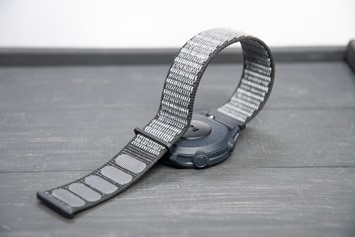
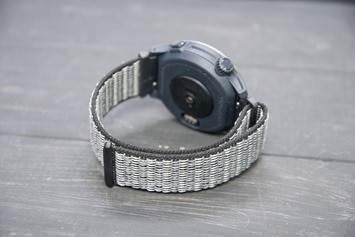

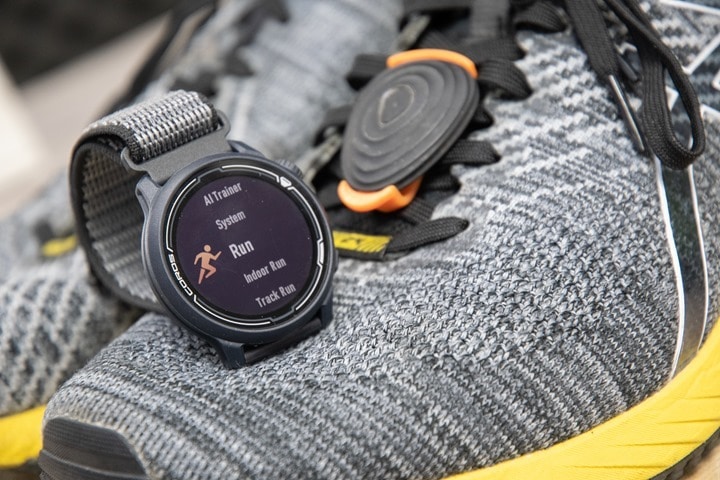
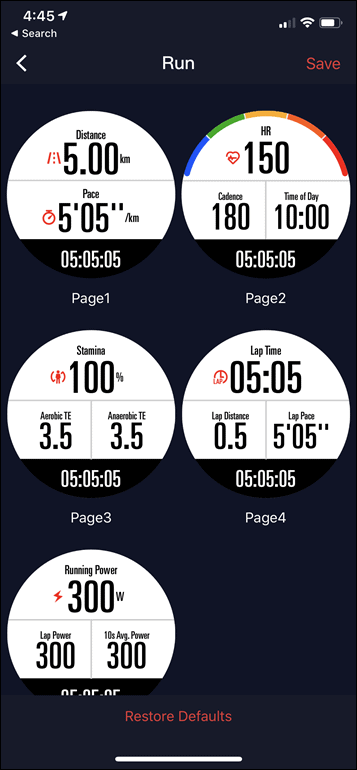
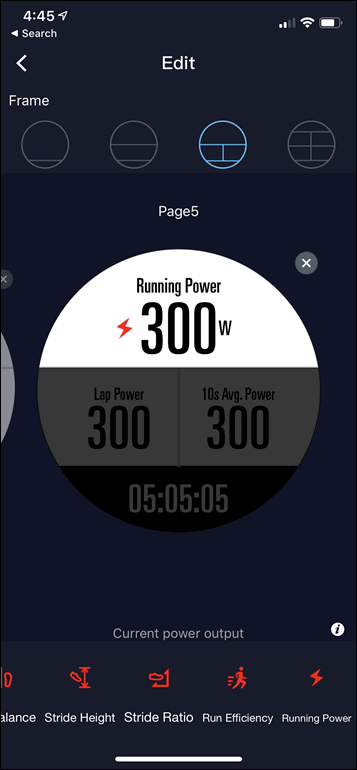
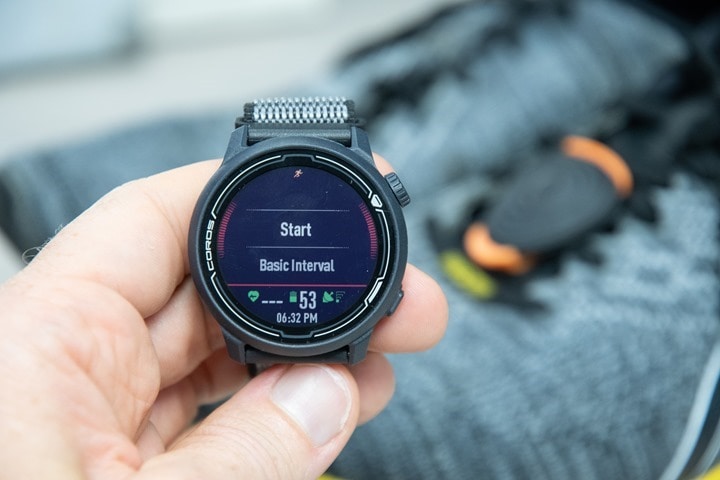
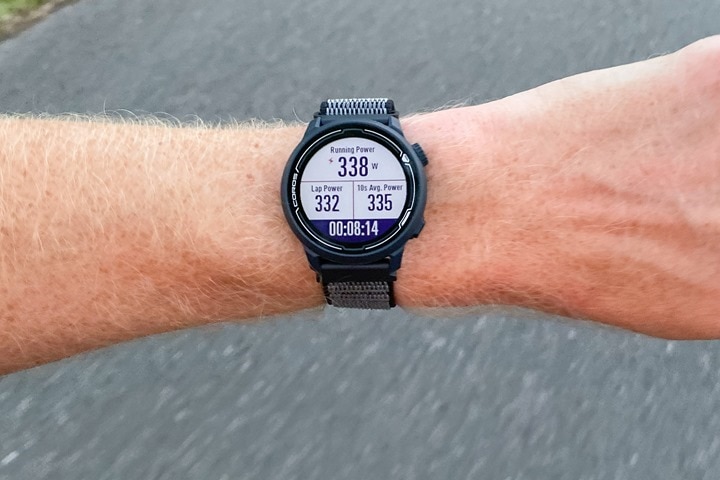







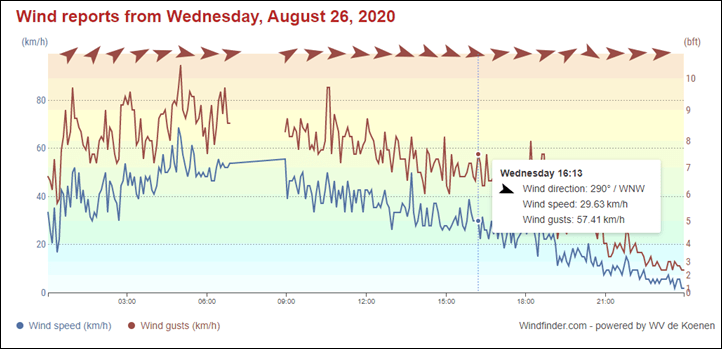

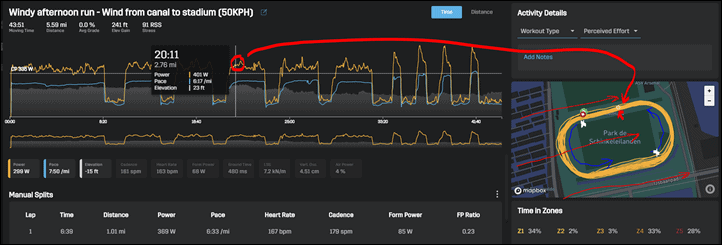
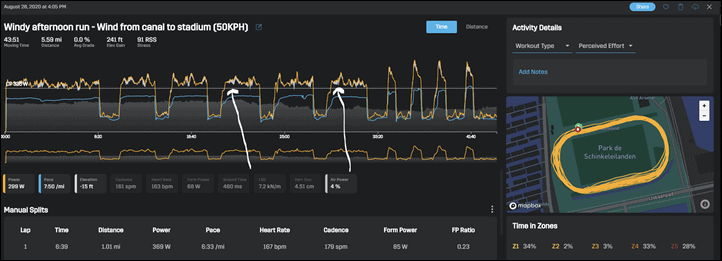




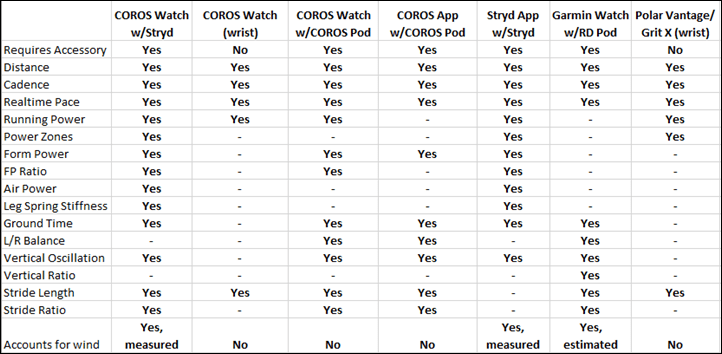

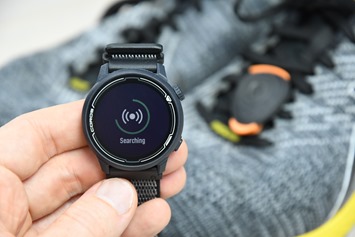
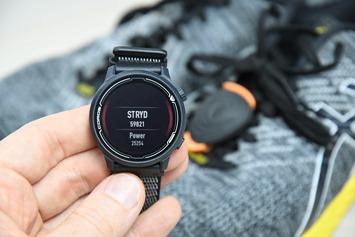
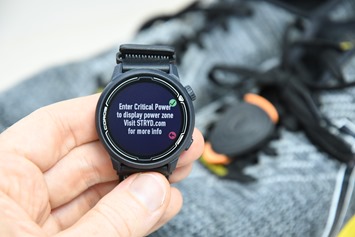

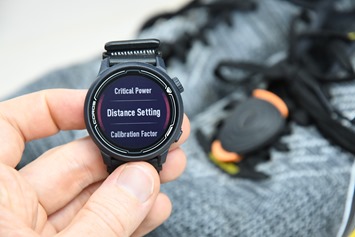
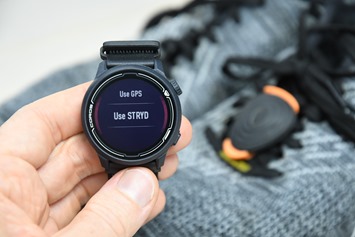
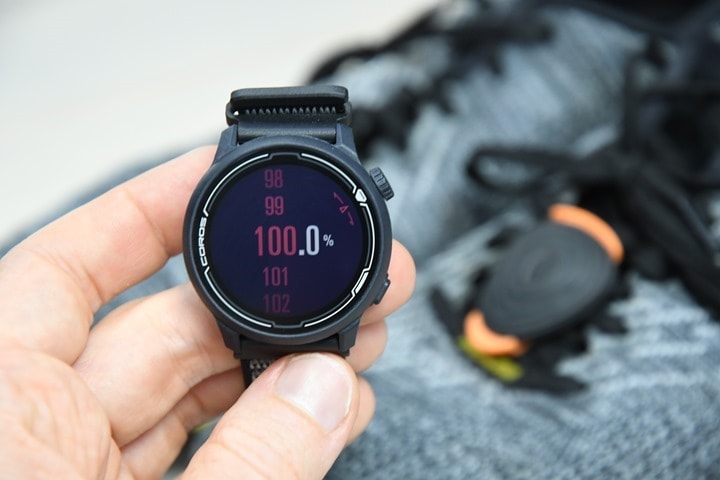
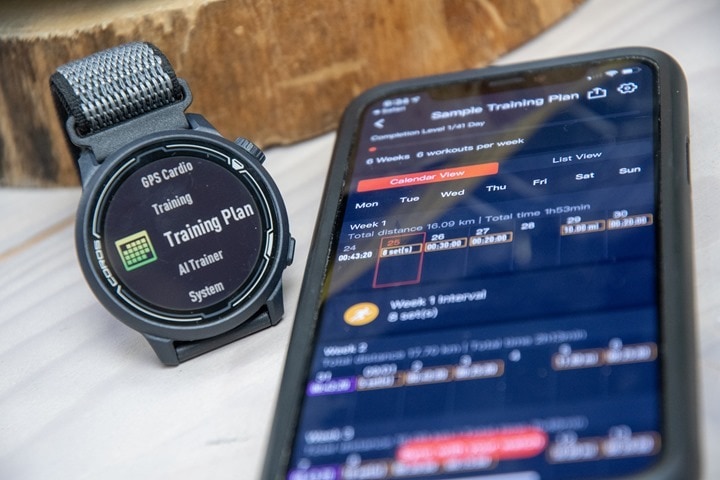
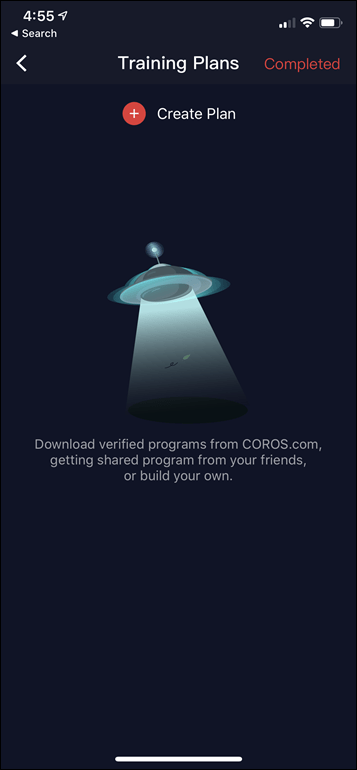


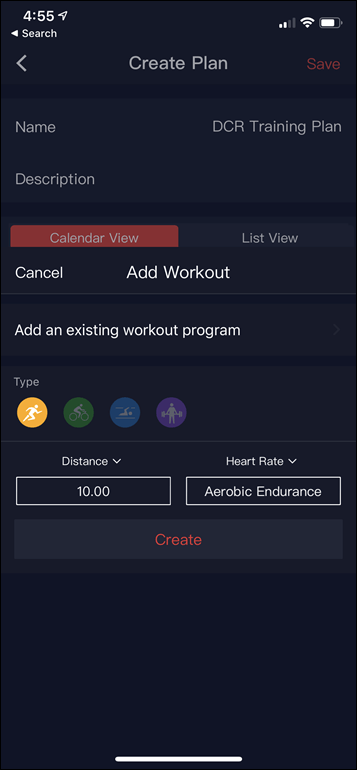
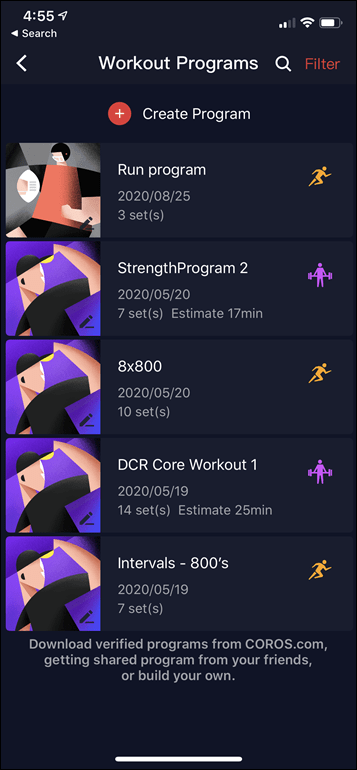
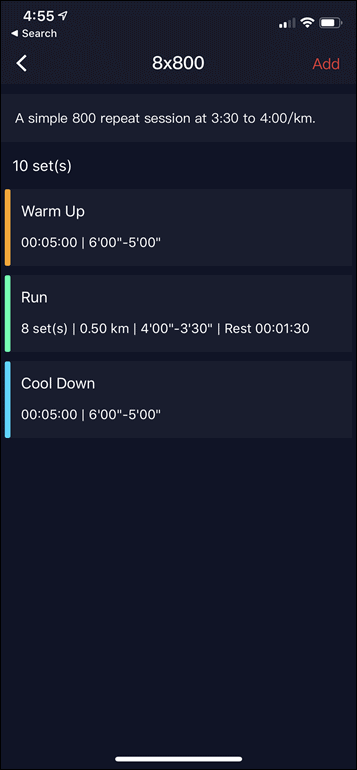
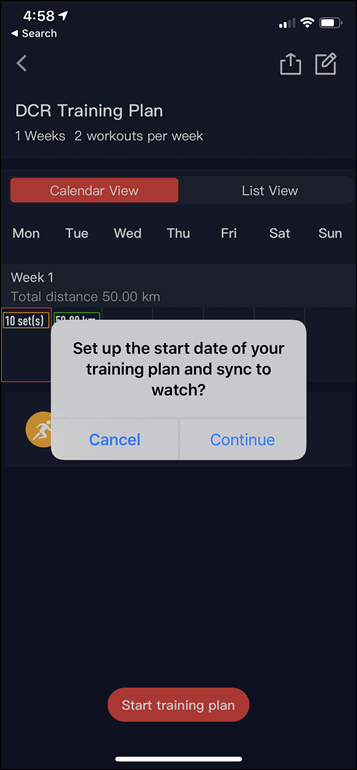
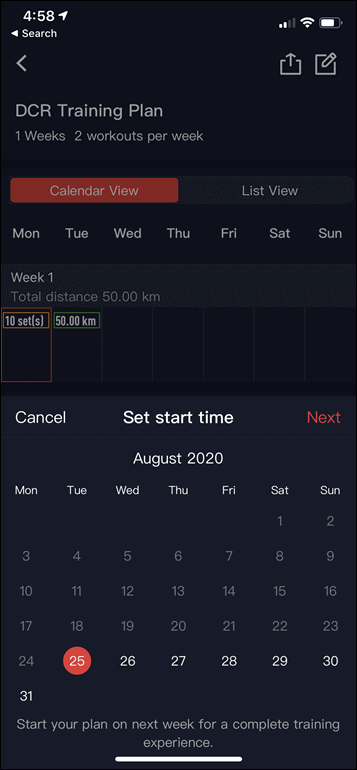
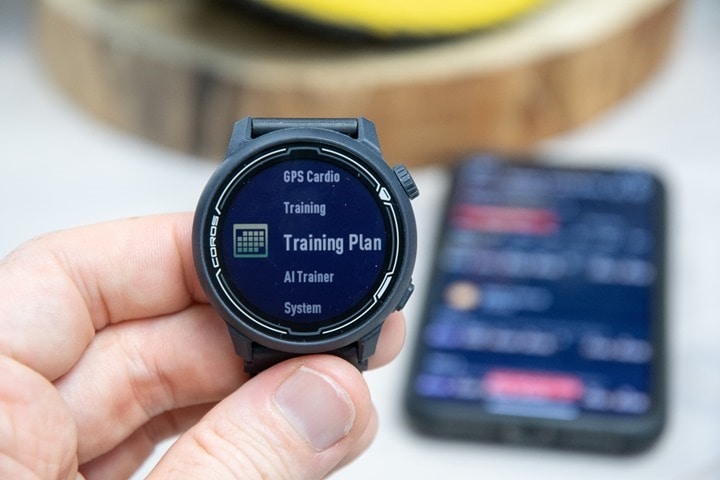
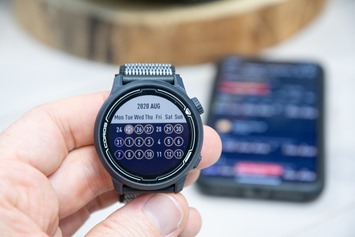
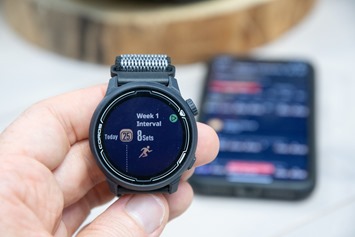
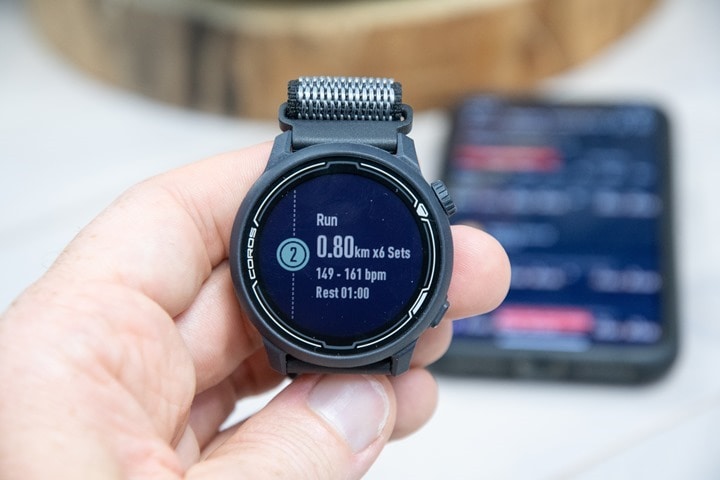

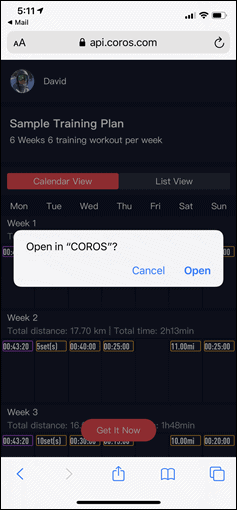

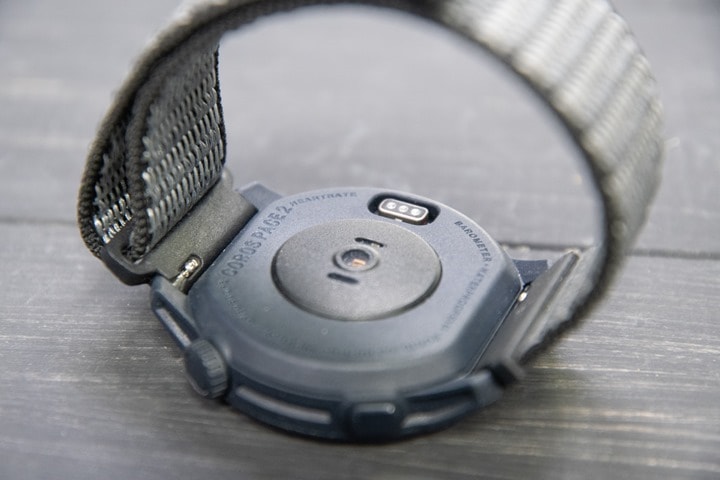








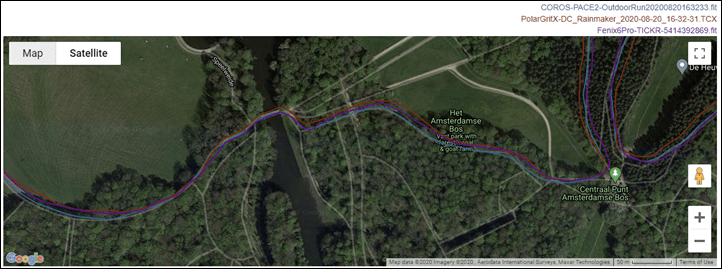
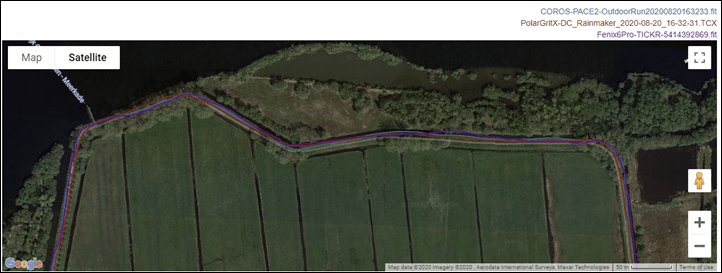
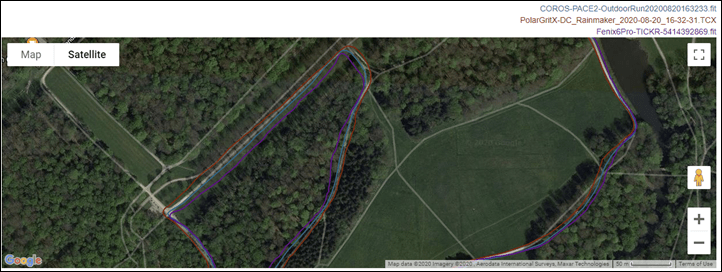



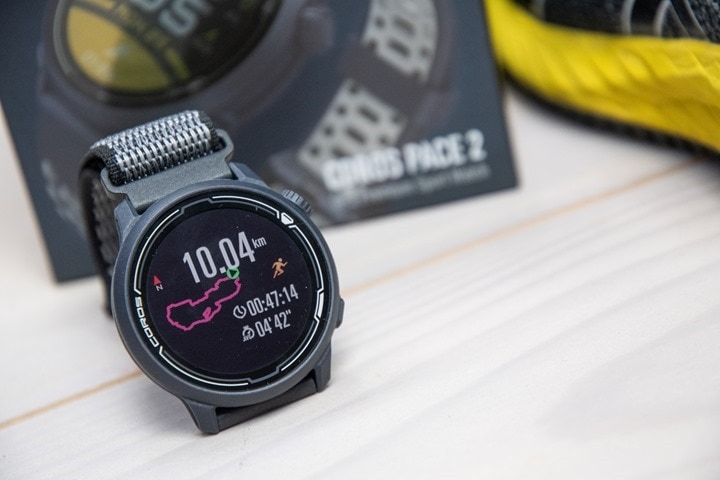
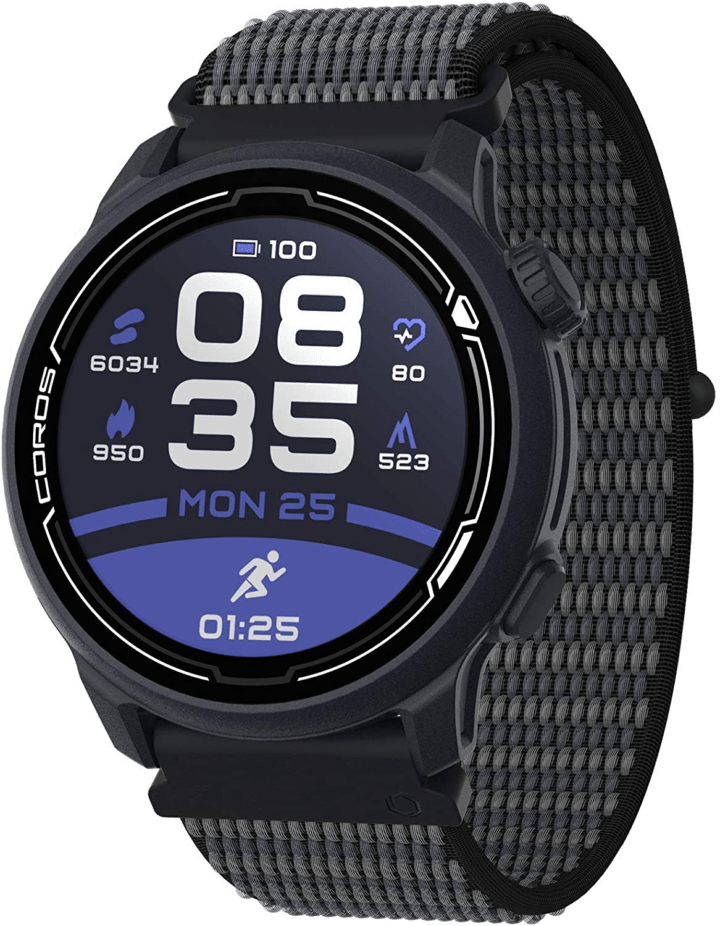
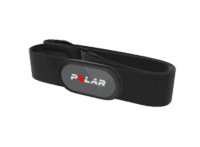
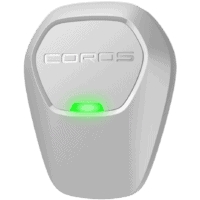
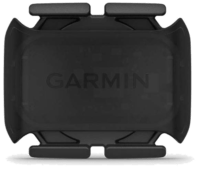

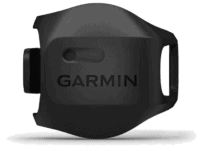






















Running with power with a free watch?
Er, no…. re-read…
Yes – kinda. Running with very modest accuracy power is included. If you want accurate power, you’ll need a Stryd.
I’d suggest looking at the power accuracy charts above – it’s virtually identical to Stryd.
>Yes – kinda. Running with very modest accuracy power is included. If you want accurate power, you’ll need a Stryd.
That’s not what Ray’s implied in this post. I’m in no position to confirm or deny his data, but it seems to indicate you get pretty accurate power data just from the wrist. Obviously, a full review and more data is required to confirm that.
That’s great to see. Coros’ graphs showed it to be less accurate however. User variability perhaps
Does the write based power use GPS? If so, wont there be significant variation due to terrain/coverage etc
But what happens with poor GPS quality – for example in the forest? Do Coros and Stryd still deliver the same values then?
Yup – in fact, one of the two runs was almost entirely in the forest, with about half of it on trails.
One thing to remember that I think many people seem to forget is that wrist based pace (non-GPS, just straight wrist based) has come a long way over the years, and the way companies calibrate across numerous pace buckets is pretty advanced. Even going under some massive 150m+ wide bridges didn’t cause any issues with the comparisons.
Power comparison chart from Coros
They said on YouTube today that yes it requires GPS, so no love indoors. Still for that price you cant complain and they put a world of hurt on Stryd in the process.
How is it possible for Coros to be identical to Stryd without wind measurement?
The graphs aren’t identical, but close. Wind is a very small % of overall in most circumstances. A quick glance shows my Stryd Air Power is only around 1-5% on average…its only when running in very gusty or harsh wind conditions that it would really be noticeably different if ignored.
5% is a lot. Even 2% is significant when you’re running rather than looking at the charts sitting on the couch.
You’re seriously comparing GPS-based power to Stryd? Well, if you need just an average number, GPS is Ok, but if you want to run by the power, you need a reliable and responsive sensor. GPS is not that.
“Even 2% is significant”
No it’s not. 2% variant in running power is not significant while cycling in outdoors terrain, and it’s definitely not significant while running outdoors either. 2% on 350w is a mere 7w – and, to throw real-world data at this silly assertion, looking at my Stryd-driven data from Monday’s interval run, that would be a whopping 2 sec/mile shift in pace looking at the actual data. Not just making up random numbers.
I keep seeing people say it’s all powered by GPS. This is the most repeatable FUD out there. WDR (wrist based pace) is what stabilizes the data. This isn’t new stuff. The fact that I can jump on the treadmill downstairs, with COROS Pace 2 without GPS signal (I’m under a 5 story building) and get similiar values to Stryd straight away demonstrates that quite nicely.
Now, yes, wind resistance on a day like today (with 50-70KPH winds) would in fact be massive. Huge. And, it was also a huge part of a one-way marathon I did years ago. It sucked for a head-wind the entire time. I’ve oft said those are use cases where having wind accounted for in Stryd would be a big deal (as with the latest Stryd).
But pretending that 2% is a meaningful shift in running power isn’t real. It’s just not. Just like pretending that all running power is based on GPS-only isn’t real. It’s just not. And there’s more than enough data to easily demonstrate those things.
Are all the people on here saying that no way can this compete with Stryd reading the same review as me?
I don’t doubt that wrist based accelerometer can provide a proxy for pace when GPS drops out, but I’d be really surprised if a wrist based accelerometer can be as good as a foot-based one at measuring pace for a variety of speeds and running styles across indoor and outdoor runs.
Coros must have some algorithm if their wrist-based pace can match foot-based consistently and measurably.
Just for fun, I went out and did a track workout this afternoon. Winds were sustained 20MPH/30KPH, and gusting to 50KPH. I wanted to see what would happen on the Stryd power vs COROS power.
The difference was negligible between them almost the entire time, and in cases where they different, there didn’t seem to be a clear pattern (meaning, into the wind versus with the wind). Variability was a touch bit more than I saw on non-crazy-windy runs. But again, not too many people willingly run in 50KPH gusts. My pacing was crazy steady (+/- :02secs/mile), and the variability on both units was the same (meaning, they both fluctuated at times, but not necessarily with much clear reasoning). Obviously, power is more than just pace stability, since wind, form, etc… are taken into account.
Also, max Stryd Air Power value I see was 8% when straight into the headwind. In all my other runs, it topped out at 1-2%.
I know is a bit too much to ask, but a breadcrumb route and then I would be totally sold.
+1
This. If it had any kind of route nav I’d be pulling the trigger without a second thought. And I don’t think it’s really too much to ask since even the old TomTom Runner 3 had routes in this price bracket.
I’m tempted even without route nav. The Stryd integration looks fantastic…
That’s a very competitive price. As a current Stryd user with a Garmin 920 , it feels time for an upgrade.
Thank you for your review, Ray.
In my case, this watch is a clear winner.
I will order it ?
Seems like a great watch! Did you have the chance to swim in open water with it? And on the bike it compares to garmin?
I had hoped to Friday, but then life got in the way, and then hoped to this afternoon – but getting three big posts out the door today got in the way.
However, tommorrow…tomorrow is OWS time! Oh, holy @#$#@, I just looked at the wind speeds for the dock for tomorrow morning. Maybe afternoon is better.
Very interested in seeing how the OWS accuracy lines up – I’m about ready to run my 935 over with my car for how off my GPS has been in open water (which is the majority of my watch use).
Update: OWS is looking less than optimal for this morning. I just watched a long river/cargo boat attempt to go across the lake-thing that I swim in, and it had to turn back because it wasn’t making any progress against the 50-70KPH winds. #NotKidding
I’ve never seen that before, ever.
Maybe later this afternoon, supposed to calm down.
Would love to know details as well. I am primarily an OWS, looking for something with accurate wrist based HR in-water, and my 920xt is getting old (and no heart rate). Thanks Ray!
How’s the GPS accuracy with OW swims?
Is there support for pool swim rest intervals and structured workouts?
How’s the sleep tracking accuracy/functionality?
Looks like your comment came in right as I was asking the one above about OW swims. Hopefully tomorrow, but winds looking pretty sketchy. Not that sketchy ever stopped me.
Pool workouts support structured workouts, with rest intervals as an option.
Sleep tracking is pretty similiar to other. It has sleep phases (and like others, who knows on accuracy), and the timing seems pretty good to me as well.
I suspect I’ll have my full in-depth review out by early next week. If I had 2-3 more hours it’d have been done today. Mostly just need to write/photograph all ‘The Basics’ type stuff, and photograph other sport modes that I’ve already tested.
for me, pace 2 was comparable to the 945 in OWS (not quite as good but close).
945 is pretty much best at ows
Howie. I’ve been using the Apex for a year and pool swim with rest intervals works great (one of the reason I sent back the original Pace back when it was first released). You can create a swim structured workout, but to be honest, it’s not all that great because the distance is in Miles/Kilometers instead of Yards/Meters. I had hoped it would have been fixed with this release but I’m much happier with the Stryd support!
Still need Stryd for accurate treadmill running or running in big cities with spotty gps
Or any waaaaaay cheaper foot pod. Almost no rec runner needs super accuracy and if you do I’d suggest a track. Stryd is like a cult
So no navigation on this watch?
Correct.
Does it support cycling power meters?
Yup! I paired it up to my Favero Assioma pedals and have been riding with it that way.
It says – Still supports external sensors including ANT+ & Bluetooth Smart sensors
So – I would think that would be a yes for cycling power.
I’m interested in whether it can support the now defunct Humon muscle oxygenation sensor.
Awesome then :) Thanks!
Can you get Cycling Dynamics data when paired to Favero Assioma Duo?
No cycling dynamics supported.
Hey Ray, running in Florida has kept me away from nylon bands. I rinse my silicone band after each run(as well as charge while showering) and dry it. With the nylon band I imagine it retains moisture . I like the idea of tightening the band and doing away with my HR chest strap. Your thoughts. Thanks.
Yeah, it does retain moisture. I fact I was reminded of again while shooting something a few days ago and then realizing I had a big wet spot from the watch sitting on my pants.
Meaningful moisture retention timeframe seems to be about 30 mins.
Their watch band looks almost identical to the Apple Sport Loop, which is my favorite watch band ever. Also, much easier to get the tightness just right to record HR, but not too tight to be uncomfortable. I have lots of other Apple bands but keep returning to the Sport Loop. Easy to clean and dry.
I’ve been looking at replacingmy Suunto Ambit3 Sport recently, as the GPS seems to have decided to bug out, and have been really struggling to find the right blend of multisport capability, build quality/accuracy and price. It seems like all the mid range watches (Polar VM, FR 245) have limited functionality and all the watches IM capable watches (PVV, FR945) come in at £350+ with a load of features I don’t need. I’d be tempted just to buy another Suunto Ambit if they hadn’t totally ruined the tech platform!
Hopefuly this Coros can be availalbe in the UK sooner rather than later :)
I agree, my Ambit3 is dying (battery life shot to crap), but it has what I need. Looking forward to the full review…
At first look it seemed like great replacement for Suunto Ambit but lack of breadcrumb navigation (!!!) and also impossibility to add sports modes for walking and hiking (if I’m not wrong here) ….that’s the deal breaker for me :-/ Everything else looks great though…such a small leightweight watch with barometer and great battery life wow….so common COROS it is just one software update :-)
What do you think the probability is that Form goggle integration might happen in the future? Would the hardware spec support the integration?
Only if FORM did manual integration with them, which would be tougher than the CIQ integration.
I suspect the hardware would easily support it, it’s more a matter of whether both parties find value in it. COROS has traditionally courted runners more than triathletes (as the demonstrated in the livestream today).
Good point on integration challenge. I am currently using the Stryd footpod #1 w/o the wind feature and apple watch combo for majority run training and like the training peaks integration for run workouts and training plans.
I am also interested in getting more into swim-run. I would like to base my swim-run run leg efforts based on my Stryd critical power but kinda gave up on this option since my Stryd footpod is not waterproof. I think the swim-run market seems to still be underserved from a watch perspective so there might be opportunity for Coros to tap this niche but growing market if they can provide unique features like ability to set both run power zones and swim pace for sim-run events along with effective alerting (Form goggle integration would be great) when out of zones. Either way thanks for analysis as I was thinking of upgrading to Stryd Air but might be better served by getting a Coros Pace 2 in the near term.
Whats the advantage of Garmin like Fênix 5 bedides web platform!? I dont ser many diffetences (useful), he measures/track HR while sleep, steps!? If so i will sell my garmin!
different between this and APEX 46mm what I can see
Do you think that coros will or van put maps on their watches and after you’re previous reviews of rhe pro and vertix do you think that they are worth the money now
Maps are viable, but it’s a big lift. Typically there’s about a 2-year development timeframe to get functional on-device routing working for most companies. It’s easy to get it to prototype/demo stage, but it’s a nightmare to get it to usability stage.
It’s the devil in the details to understand the mostly hot pile of garbage that is the world’s mapping collection in turns of what you can and can’t do, and it’s even worse at the cycling/pedestrian layer. While Garmin uses OSM for example, they have a tremendous amount of logic atop it so that you don’t get endless notifications when a street or path name quietly changes (which, it’ll do 15 times on a path you never knew it did).
I suspect inevitably COROS will have to implement mapping. My guess is they’ll do it akin to the Suunto 7 method of having underlying maps, but not actual routing.
Hey Ray, can you add the .fit file from Coros Pace 2 with Stryd?
I’ve been running with the Pace 2 using native power, not Stryd (Stryd was paired to a Fenix 6). I’ll do some Pace 2 + Stryd recordings this week.
I’d like to see comparsion and review of Amazfit Stratos 3. Thx.
Does it support charging while running w/ GPS?
+1
Ok, just checked. I started an outdoor/GPS run, and then plugged it into a simple USB battery pack. It continued to record just fine, and the power/battery icon then switched to the charging icon. But otherwise did what you want, which is stay recording.
what is UltraMax mode?
link to coros.com
UltraMax mode is a setting for GPS on APEX. When selected, the battery life using GPS can be extended up to 100 hours on APEX 46mm and 80 hours on APEX 42mm. The reason behind this unreal battery life is because of our unique algorithms and mechanism. For every 2-minute period, the GPS data is recorded for 30 seconds. APEX relies on motion sensors, machine learning algorithms and individual running model for the remaining 90 seconds. Not only can APEX provide relatively accurate GPS tracks and running metrics compared with normal GPS modes, the battery life is also much increased to be used in the toughest conditions.
One thing that impressed me right away from your pictures is the size of the watch. It will actually look good on my relatively small wrist. That is one thing that has always driven me nuts about most, if not all, of the Garmin devices and that is they look honestly look goofy on most people unless you have a really large wrist because they are so big.
I was a couple of weeks away from buying the Timex R300. This might just change my mind!
DC, does Coros have plans to up the game on the smartphone app or web platform to mimic Polar Flow for instance? Or any rumours?
This is amazing, Coros seems to be getting everything right lately.
Looks like this pretty much destroys the mid-range market in features (any “sports watch” without extra non-sports-tracking features/gadgets (payments, music, etc that aren’t tracking functions).
For Polar in particular, this guts the entire Unite, Ignite, m430 and Vm range completely from their current offerings and price points (does everything they do, and more, other than “route/back to start” which isn’t much of a great feature as implemented by Polar on the models that even have it. Unite is $50 less, but why would you do that at this point given the massive features upgrade this offers for the price difference.
Great job by Coros at this point it seems to me! Can’t wait to see the final full review and OWS results! This even bites into a chunk of more expensive Garmin models as well if “frills” aren’t needed. And having barometer and compass on-board… dang, it’s basically a $400-$500 sports-watch minus only the non-metrics-tracking frills.
As you said, if someone doesn’t have a “sports watch” today (coming from a fitness tracker, or non-HR watches,) this is an absolute NO-BRAINER to start with in my book. And coming from a replacement of an existing low-end sportswatch model, this is still a massive step up.
I agree for the most part and am very excited with what Coros is doing. But I think Polar still has a unique feature over everyone else with Nightly Recharge. If they ever offer the user that data in a week/month summary they’re getting pretty close to the recovery info you’d get from Whoop but with the underlying HR sensor being much more accurate.
Im still with Polar though. Their Polar Flow is truly neat and second to me for me. Thats where Coros probably falters at the moment, though I believe the time will come when Coros able to have a platform of themselves. Nevertheless I would consider to get Pace 2 as a back-up spare unit for my run, since I already have V-M + Styrd for my general use.
I’m not really sure this is really aimed (yet) at new “sports watch” users. I will wait for the full review from Ray, but his comments about the phone app and complete lack of an online App like Garmin Connect or Polar Flow means that a new user will need a subscription to Strava or Training Peaks. Now, for someone who already has a subscription (probably not a new sports watch user), the value proposition for the main items you really want in a sports watch is pretty impressive. Garmin makes a point of leaving out some critical feature (or features) in all of their lower priced watches and instead gives you a lot of fluff. Although nice to have, I would say navigation is really fluff, since if I’m running/cycling somewhere I don’t know, I almost always have my phone.
Oh… to my last kudos, the one negativeI forgot, they should have kept the buttons as you indicated… that was their only mistake on this one, in my book (some may like bezel/button combos, but, ugh, oh well, still an awesome product).
At last, sensible pricing for a gps sports watch, Garmin’s (and others) upper end product pricing is a joke.
This seems kind of odd re power support. On the one hand Stryd seem to be making a lot of the native power support. On the other hand you might think the “similarity” of the native power is getting on for making the Stryd redundant. I kind of like Stryd but it is a pain to have to clip something on and remember to charge it etc etc. What does useful is that you forget your Stryd one day (as I often do) the similarity of the actual values (no offset) suggests the Corus is a good safety net. Bit like if you want the best HR and forget your strap one day and go for OHR.
I’d like to know how they came up with those similar values. Huge teams working at Garmin, relatively large and extremely experienced teams at Polar and Suunto, and Coros (a helmet maker) comes along and matches Stryd’s numbers. I have contacted Coros many times about how they calculate their metrics, but they never provide an answer.
Over the years I’ve gotten the feeling that when COROS goes to recruit, they generally find the smartest math geeks out there, and then optimize the crap out of it.
Seriously – anything that’s heavily technology/algorithm/optimization driven tends to be next level on the COROS units (such as battery life, or now running power accuracy).
Whereas inverse, when it comes to finding user interface designers for the app, they’re like ‘Nah, give me three more math devs instead’. ;)
I find the UI much better than Garmin Connect. Not as good as Polar Flow but it’s good from my point of view ;)
Somebody asked on the Stryd FB page if they gave their algorithm to Coros. Answer was no. That said, for me, Garmin and Stryd power curves are reasonably similar except for the offset. If you wanted those power curves look pretty similar maybe just apply a fudge factor. Or maybe the Coros guys did the math similar way to Stryd and Garmin another way and Polar another way too. I recall all thought they were correct. I kind of like power as a concept but do still find I look at pace more often. And maybe as Garmin’s entry in the power space kind of went nowhere maybe they just think it is not something the vast majority of runners care about. On that I think they are right.
I suspect that Coros decided that Stryd power was accepted as the most accurate out there (since what “running power” really is, is not defined) and then, given the inputs they had on their watch (accelerometer, GPS, altimeter) they came up with algorithms that produced similar results. It seems they did a pretty good job ;)
Also, I think power as a concept, probably isn’t that important, but if you can develop training plans around power (whoever’s power) that work, well then you’ve got something. By immediately integrating it into their training programs, Coros is on the right track.
Have you been to their development location in Dongguan, China? I’m just wondering if anyone, other than company people, have seen them at work.
Nope.
“ready” not “read”
(…)and am just about read to publish an in-depth review(…)
I’ve been using a CIQ running power app on my 920XT. Does it work? Well, it’s a number generator! Is it ‘right’? Well, what is ‘right’? It seems ‘right’ from the POV of more effort = more reported power. It seems ‘right’ in an absolute way since I’m calibrated on bike power, so I sort of know where my VT is and what power my tempo / threshold / anaerobic paces are. The CIQ, based on a research paper, seems mostly ‘right’. BUT…no way to download the results, but I’ve found running power to be useful in real time, especially for racing. :( , no racing recently. What about a Coros Pace 2 vs Stryd vs Garmin CIQ shoot out? Inquiring minds want to know…
Ray,
What happens to the wrist power readings when you turn and steady your arm to actually read the watch?
No change, mostly because they smooth it a bit. In fact, if I look at the places I took some of the photos, it’s virtually impossible to tell that anything changed for those handful of seconds.
Is it for sale yet? I click on links and went to the Coros website and although it’s in the shop, I can’t seem to add it to the cart.
Never mind. It was a browser issue.
Does it have a dedicated lap button?
Yes the button functions as a lap button
So no dedicated start/stop, then? Or does the crown push?
Bottom right is lap, top right corner is start/stop.
Do you think this watch would work ok for a trail (and sometimes ultra) runner on a budget? I get by just fine with a Garmin 235, but battery life is definitely an issue on longer days.
I’ve been eyeing the Apex for a while, but I’m not sure if the extra $150 justifies the extra features.
Thanks for all your great reviews. Really enjoy all the detail. :)
Yup, totally good for a trail runner. No courses/routes, but if you’re good with that – then there’s virtually no meaningful difference to the higher end Coros watches except battery life an an SpO2 sensor you’ll never use after day 2.
Awesome, thank you! Will the Pace 2 get a person through a 12-16 hour event?
Yeah, no problems there I suspect.
i can confirm that :)
Hi Ray,
is this model can import/load gpx file ? i believe pace 1 does not support this feature.
Thanks
No course/route support.
I see mutlisport, but just want to clarify: will it pair to a cycling power meter?
Yes. I’ll add some photos in from my cycling (with a power meter), later today.
Excellent, thanks! I believe the Pace is now the least expensive GPS watch that does so!
Hey Ray,
Any word on if/when Coros watches will be able to download structured workouts from Training Peaks? This watch looks great, but I rely on that functionality with my Garmin.
Thanks!
I emailed Coros support, and here is part of their answer…
“we are already working on the TP training plan integration feature and hope to support this soon. “
Super interesting. However, for me, the killer Stryd feature is the distance/pace accuracy. If you are seriously monitoring your training performance then, in my view, that is the most critical component.
I’ve been looking for a watch that can seamlessly integrate power based structured workouts using my Stryd pod (with adaptive power zone locks). My current Polar doesn’t allow structured workouts with power and with Garmin you need the separate Stryd app but then you loose the regular workout fields.
Am I correct that this watch might be the one?
And a follow-up ;); are training plans from Stryd with structured workouts sync’ed with the Coros backend automatically or do you need to make a separate plan within the Coros ecosystem?
Thanks for the great (p)reviews btw!
Thanks for the hands-on, Ray!
As you mentioned that running power is quite controversial nowadays – is there a point of using it for training?
I’m mixed on it. I think there is value there, but I also think it’s somewhat oversold.
Having it native is the way to go in terms of adoption.
Isn’t the debate on running power very similar to cycling power? Training and racing becomes specific and adaptable to hills and wind. Racing by power based off the exact course profile ensures you never go off too fast and fade at the end.
It’s mostly different because there is no standard on what constitutes running power, it varies by device. That aside, the ability for each device to account for different things (like sand, gravel, or wind) varies – making it not as absolute as some people want. Whereas cycling power is absolute in those cases.
Yes the absence of a standard is ugly right now.
Even without one are there not clear advantages of running by power verses pace over an undulating course? This is where I see running and cycling power to be similar. Perfect pacing regardless of terain.
Agree.
If you’re using the data for yourself, the actual underlying number doesn’t matter, only that the number is comparable and measurable one day to the next.
Whether my power is recorded as 300W, 275W or 3BillionW is largely irrelevant, as long as the same power output will show the same value if I repeat it.
Even Stryd admitted (when I asked them directly) that their “running power” metric is not normalized between running on smooth pavement and running on trail/uneven terrain. Said differently, Stryd will always underreport running power on say an 8 mile trail run on uneven terrain at 8min pace versus an 8 mile run at 8 min pace on smooth pavement. So one cannot compare it to cycling power where it’s on the basis of torque measurements that that are consistently accurate independent of riding terrain.
Does it get its metrics (vo2 max, Aerobic effect, etc). from Firstbeat or its developed in-house?
Developed in-house
Just found an article in their support site that says it’s not completely developed in-house:
Unlike some of the brands that are using technologies provided by data vendors directly, COROS works with a partner to co-develop the COROS trainer and other fitness data. The workload between COROS and our partner is shared almost equally. Our partner has its original lab designs and algorithms while COROS provides feature designs, user case applications and real-world testing. The development and improvement is an on-going process and we are confident with the in-house development process. COROS is aiming to create a better and more accurate platform for the sports community.
L/R balance from the Stryd Pod – that’s new isn’t it?
Will this feature be coming to Stryd users who don’t use Coros watches??
I noticed this as well. That’s something that I lost after stopping using a Garmin heart rate strap.
Do they have any EU shop, or distributors in EU?
Running Warehouse Europe sells Coros though they don’t have the Pace 2 yet. EnjoyYourBike (cringey name but reputable dealer) sells them as well and they already have the Pace 2 listed but not yet in stock.
Ray, thanks for the review. Have you tried in a treadmill?
Does it measure pace/power or is gps needed? Can it be paired with Zwift?
I’ve very briefly tried it on a treadmill.
And what’s interesting is that while COROS said in their livestream that it doesn’t work indoors, that’s definitely not the case. I just tried it now in the regular run profile (but without GPS, as I’m basically underground), and I got power correctly on my watch as I ran on the treadmill, at values that seemed normal/realistic (the usual as outside for those paces).
Great to know that! Does it broadcast any measure (hr,speed,etc)?
Garmin lately started to include this type of profile to pair it with apps which is really handy with this pandemic.
It supports broadcasting of its optical HR via Bluetooth Smart.
No Ant+ HR broadcast? That’s a deal breaker for me…
Actually, sorry, yeah, it’ll do both.
Can I pair the Coros Pace 2 to run on Zwift without a footpod?
“Storage capacity increased from 16MB to 64MB”
I’m going to assume this is a typo and you mean gigabytes?
Nope, megabytes. There’s no music support here, so this is more about longer term workout storage. Typical .FIT file burn rate is 100KB/hour. Planned workouts are usually super small, a handful of KB.
Hey DC Rainmaker,
Quick question, which watch do you feel is better Vivoactive 4 or the Coros Pace 2.
I’m a general user and mostly MTB or like to look at my heart rate, sleep etc
I feel its time to step away from the ever ageing Garmin products.
Where can I get one of these? I’m based in the UK.
Thanks again for your great reviews
Two things are holding me back from buying Coros:
– The retail channels. Availability is worse tgan Sigma. Not even the Coros Pace 1 is available on amazon(.de), and also not in retail stores in Germany.
– The missing manual. Aside from a short quick start guide, nothing can be found on the Coros homepage, not even for the Coros Pace 1. For example, I‘d like to know the available data fields as well as some background info on their training metrics.
Check this link for more information about how to use the COROS watches: link to support.coros.com
And I agree with you on the first disadvantage. We are working on it.
And how about treadmill accuracy? Have you compared it to the Stryd pod?
o you know if there’s any plan of adding the feature to import running workouts from training peaks to the watch?
Possible to start workoutsession and parts of with button? (Like Garmins lapbutton)
It is curious how seemingly uninterested Coros is in the triathlete market. The Coros people worked hard to get the Pace 2 pushed out on every tech and fitness site on the planet today, except for any of the big triathlon platforms (nothing on Slowtwitch or Triathlete). I’ve looked at some of their launch materials, and nothing is really aimed at triathletes. Given the weight weenies that us triathletes tend to be, you’d think the light weight of the Pace 2 would make it a product marketable to triathletes. But maybe the market is too small or Garmin is just too dominant?
I do agree.
I suspect though that they’ve discovered that with Suunto mostly ignoring the trail running market in recent years, they can approach entities (and athletes) that were often more fond of Suunto and hook them into the COROS ecosystem.
All this despite the fact that COROS has basically made the best budget triathlon watch, without even trying.
Thanks for the review. I am probably going to get one of these. In the market for a tri watch that does a decent shop of open water swim tracking but can’t justify the Garmin 945 price and don’t care for on board music and NFC.
Was going to wait to see what the rumored Garmin 745 looks like.
Quick question, is there a bike mount for this watch? I know the Garmin 935 has one.
Thanks
Awesome review and super excited for this watch!! Time to post my Fenix 6 Pro for sale but not my Stryd!! I am excited for the integration. I have hated the 2 CIQ limitations by Garmin for their high end watches.
Q- do you know of any other refreshes coming from Coros for the Apex line? I have to say that I love the Fenix for the all day wearability and not looking like an running watch when dressed for work!!
Last comment, do you know if there was %CP as a field for the data screens??
Thanks for another great review.
Based on an interview that I listened to with the Coros CEO, I’m guessing in the next 2 to 6 months. That’s the watch that I’m waiting for. I need navigation.
So I can get running power on my wrist for $199 – is there a way to broadcast that power data so I can use it in Zwift Running? Perferably bluetooth so I can just prop my iPad on any treadmill and run?
Zwift Running does not work of power but pace/speed from say a foot pod or Runn device.
Can the watch show power as a percentage of critical power?
Hey does the Pace 2 maintain full functionality while recharging on a run?
Thank you
As I am left handed (wearing watch on my right hand), I suspect operating the digital crown on the right side of the watch will be difficult.
Do you think that Coros would enable “switching” of display as to wear the watch “upside down” and have the crown and button facing the wrist on the right hand? Or this would interfere with accelerometers?
Yep you can switch the digital dial to the other side from the watch settings.
Coros is really pushing hard to get their athlete GPS market share. I’m a long time Garmin user (currently using the 945). I am not ready to switch to Coros just yet. But if I only had or wanted to spend $200 on a GPS multisport watch — this is it. Maybe the old Garmin 735XT may be an alternative, but man, you have to give it to Coros. They may be my next go to watch once they can get Maps integrated in their watches.
Ray, I’ve been using a Garmin Forerunner 230 for four years now, and have considered switching to a different brand’s watch (such as the Coros reviewed above) due to price/value considerations. My biggest concern is the need to adopt a completely new UI with my data spread across two systems. I have my my Garmin Connect account linked to Strava, but I’m wondering if there’s a simpler/easier solution to integrate my data. I really never use/view Strava, just Connect.
On the Apex they do, you can choose which hand the watch will be worn on and what side the crown will be on. Plus what direction of the crown is ‘up’ or ‘down’. I’d imagine it’s the same with the Pace 2.
That strap looks really nice, any idea if it’s compatible with a Fenix?
I am interested to see how the others will respond (particularly Garmin). I just nixed buying a 945 for this or a new Apex (did they say anything about that DC?). Also I hope they have an API for training integration. I am trying to get off Training Peaks, they haven’t updated or innovated in years (I have been using it since 2014) and I would like to use Todays Plan or some AI solution and an API would be great. One can dream. ;)
I think they will release the 745 maybe at a lower price than planned. or if they want to exaggerate they will upgrade the 245 with open water swimming and multisport … difficult though
Any information about next generation Coros APEX 2?
For folks that are interested, I just added a painstakingly detailed analysis of my track workout yesterday, where the wind was gusting to 57KPH+.
This includes comparison against Stryd’s Air Power, breaking down some of the intervals into 100m chunks with/against the wind and more. The results are pretty fascinating.
I’ve added it to the running power section above: link to dcrainmaker.com
Many thanks for the updated comparison data, it’s much appreciated. The closeness to Stryd has certainly given Stryd something to think about with regards to their business model. Competition is great for consumers.
Fascinating in that, if I read the analysis correctly, the Corus appears to “detect” headwind and ups the power values accordingly given you tried to maintain speed on the 800s so requiring more effort into the wind. The original Stryd with no air power detection certainly could not do this. So either this was some strange “fluke” or it really does but, if so, what metrics could it be detecting to account for this I wonder? Did anything else obviously change like say higher cadence into the wind?
Hi there,
Does coros pace 2 work with garmin speed and cadence sensors?
Can we see these information on the watch screen?
Thank you
Yes, it does.
Sorry if I missed it but I assume the Garmin data is using the Connect app like Combo Power?
Ray, is this your first time using an Apple Sports Loop type of watch band? They’re my favorite style of band. There’s something curious about them, though. I bought the Forerunner 245 Music shortly after it came out, then went on Amazon and there were a bunch of generic third-party sports loop style bands available that said they were compatible with the 245. I bought one for like $10, and moved on. Today when I search for a nylon band like this, I can’t find any on Amazon that specifically claim to be compatible with the 245. It almost feels like Garmin or Apple is cracking down on this. But on the same note, you have watches like the Pace 2 and Amazon’s own Halo thing that come with nylon sports loop bands. Anyhoo…
Ray – Does this watch connect to a Tempe over ANT+?
According to the Coros web site, the ANT+ accessories supported are
“HR Chest Strap, Speed/Cadence Sensor, Bike Power Meter, Bike Trainer”
so no temperature. Of course, that list doesn’t include foot pods and the Pace 2 obviously supports Stryd.
yeah I’d be curious since the tempe uses a standard ANT+ format, no reason why coros couldn’t pick that up.
Ray – Can you check?
No Tempe support. Companies have to program in the various ANT+ sensor types they support. And even within that there can be aspects that aren’t supported. For example COROS supports ANT+ Power meters, but not ANT+ Cycling Dynamics.
Ray, a couple of quick questions on interoperability. Have you tried importing a Coros .Fit file into Garmin Connect, and how did that work? (My last decade or so is all in Garmin Connect) Also, is there any way to get any of the other data like steps, active calories, sleep data, etc. out of Coros and into something else or just to have the data in case Coros goes the way of the Dodo?
I just tried importing in my COROS Pace 2 track workout to Garmin Connect. I used the manual ‘Import’ option on GC Web. Worked just fine. :)
I don’t know though if you can export steps/sleep/etc out of COROS. I don’t see any obvious way to do so, though the must be somewhere from a GDPR standpoint.
Garmin does have a bulk importer for Fitbit data, but I haven’t tried that in years, so I’m not sure how that would work otherwise. My guess is in a non-ideal way.
Ray
Can the Coros use its accelerometer to track distance with equivalent accuracy to the Stryd – so you can use it for accurate distance/speed/pace metrics both indoors and outdoors? This is the reason I use my Stryd (though running power is handy to control effort levels on hills). If the Coros can do that, then they have knocked the ball out of the park and everyone else aside from Garmin (features – music and maps) and Apple (non sports features and fashion) can pack up and go home.
Seems like COROS is pushing it! Seems like they do many things better than Garmin. They even have a way to program your watch data fields from your phone, nice! Anything that Garmin does better? Maybe COROS will first to connect Concept2 machines and give you full metrics …
Hi DC,
This is very interesting product. But as I live in Scandinavia and we have winter I would like to have some support to winter sports. So, do you know if there is any change that will happen? The original Pace does not have…
I saw the Apex has winter sport comparability. Do you know what that entails? As an avid skier that may be worth the £80 upgrade, or holding out for the Apex 2
Disclaimer: I have never used a Coros Product…
…and I never will. reason being is that they just look like they have ripped off their whole interface from Garmin and (from a prior review on a prior product, Apple). That’s just the parts I can see, I dont know what theyve copied under the hood too. My personal assumption is that they can produce this so cheap because they have a product which very very closely resembles the intellectual property of others. I might be wrong but something about this company just stinks to me.
I think there’s undoubtedly some truth in there – at least earlier on. I think lately they’ve been clearly doing more on their own and innovating on their own. We saw that with the COROS Running Track mode for example.
I don’t see as much copying anymore in their newer features, watch designs, or newer user interface aspects. Whereas historically I’ve noted numerous times they were blatant rip-offs of mostly Garmin products with occasional Apple bits.
As for getting close to Stryd’s numbers – that’s OK in my book. After all, Stryd oft talks about how they calculate running power. And if there’s supposedly some standardization on how to calculate it, then in theory that’d mean that’s not something you ‘protect/hide’ (just like it isn’t in cycling power). Instead, it becomes more of the nuance of how it’s implemented and how it handles edge cases/etc…
I don’t know under the covers what, if anything, they’ve reverse engineered. All companies take things apart to understand how they work. When I go to Elite there’s a pile of Wahoo/Saris/etc trainers there, and the same when I go to other companies. All their competitors products are there. The line though between understanding how things work, and then copying code line for line…that’s the place where one has to pause. Again, I have no way of knowing at a code-level what occurs. Instead, I have to base it on what I see at the UI/design/features level.
Competition is good – and makes the products and companies we like better (whoever they may be). Without Polar’s M400 GPS watch years ago, Garmin wouln’t have significantly dropped prices on mid-range running watches. And without Wahoo’s BOLT, Garmin wouldn’t have innovated more on the Edge units. And so on….
That’s what I call an healthy competition.
Can I pair the Coros Pace 2 to run on Zwift without a footpod like with the Garmin Forerunner 245?
As an electrical engineer, I do not understand the purpose of “power” for running.
For cycling, it makes sense. If you can measure the power output to the pedals, you are directly measuring the force applied to the pedals as you crank per unit time. It is the exact metric that propels you forward. Your speed on a bike is proportional to the power on the pedals. Measuring power allows you to compensate for things like road to tire friction, aerodynamics, elevation changes, etc. So it allows for a more pure measurement of your actual physical output than your speed.
For running, it cannot be measured directly. You can’t measure the force applied to the ground with each step, unless you had some kind of pressure sensor that covered the bottom of each shoe, and probably how far each step was.
Essentially, power measurement for running is pointless without knowing how accurate it is. And with no direct measurement to compare it to, we have literally no idea how good the estimate is
If you are a GPS watch company, given the market for meters given uninformed consumers, there is no rationale to spell this out to the customer. They are just selling the products people want, even if they are measuring/estimating a pointless metric. If anything, it is testament to the general population’s poor knowledge of basic physics.
There are several papers about running power dating back to the 1970s. I’d suggest doing some research before saying pointless this or pointless that. Look into inertial distance measurements. Sole-based sensors won’t work, because of reasons, mainly stresses parallel to the shoe sole. A company tried years ago.
Stryd is quite reliable and repeatable for pace and distance. I use Stryds speed and elevation measurements to calc GOVSS and it’s solid.
I’m an engineer, too, and think running power is great (with obvious caveats). Im starting to collect VO2 and SMO2 data every workout, so I gain a little more insight than others on what’s going on.
To be fair, Stryd is overpriced. I say that after buying two. Coros needs only a reliable footpod to rival Stryds pace and distance and it’s gonna be hard for Stryd to justify existing.
Isn’t the purpose of measuring or inferring running the power the same as cycling though? In both cases the athlete/user wants to know how much of a change in their finishing time is from increased performance versus a favorable tailwind or some other external factor.
If the value returned is calculated consistently then it is useful for a user to compare against their own records. That may not let you compare yourself to your peers, but it should help evaluate progress in a training plan.
For better or worse, a variety of stats that have captured the fascination of buyers have limited value.
The combination of software and hardware allow running power to give reliable and actionable data to the user to maximise their potential. This has been proven time and time again by users.
Agree, as I had also asked Stryd about compensating/normalizing for terrain and they said that they cannot deliver equivalent power readings for a trail run versus a road run at the same pace. For the reasons you mention, the road run will show higher power.
Is it possible to connect it to Wahoo Tickr X to get data?
Not only heart rate, but also cadence, running dynamics?
Where can you purchase the Coros Pace 2. I can see the Coros Pace on Amazon but not the Pace 2
Posted on Stryd FB page by Stryd: “COROS scaled their power so that it sets over ours. Garmin or Polar easily could have done the same over the last few years and scaled their values to set over ours. Overall, that appears to be the new thing here. GPS technology has not been significantly improved. Stryd is still superior to GPS in terms of accuracy and responsiveness.”
Fighting talk or is it actually just possible that Corus looked at the research papers the same way as Stryd and came out with the same conclusion? In a way it was “helpful” to Stryd that they differed to the way bigger companies like Garmin & Polar as it kind of gave the impression they knew best. The mention of GPS in accuracy and responsiveness is kind of interesting too. If you take “current” power from anything – a bike or Stryd of now a Corus it is pretty useless in the same that so is a single view of current pace so, for me at least, there has to be some moving average based version to not totally confuse me. And that’s always been the case if I am using GPS or even foot pod based speed or “real” power on a bike.
Whether it be cycling power meters, GPS units, heart rate sensors, or running power meters – over the years I’ve found that the nuance and edge-cases of algorithms tends to be what makes the difference between the ‘best’ and the ‘worst’. In general, you only find those edge cases by putting in lots of miles (or kilometres). Typically we’re talking situations where things go slightly off-expected, and then quickly fall apart. Usually, a minor code fix addresses them. Rinse, repeat.
That said, I’m simply not seeing that with the COROS Pace 2 in terms of running power accuracy. Undoubtedly, there are going to be edge cases I haven’t found yet, but I’ve covered the main core scenarios (hills, intervals, strong wind, open terrain, road running, track running, light trails) and haven’t seen anything that’s a red flag, or even an orangey-yellow flag. Some people have said ‘Oh, but it’s 2-4% different than Stryd for a few seconds at this one point!’, to which I note: ‘Nobody has agreed Stryd is correct/gold standard’.
As for “The mention of GPS in accuracy and responsiveness is kind of interesting too.”
Indeed, it is.
Mostly, because it’s not true. And they keep repeating it. It’s not true because it’s not just GPS powering these algorithms. It’s a combination of GPS + the wrist based sensors (accelerometers and gyros) – the exact same types of sensors found in Stryd. Sure, Stryd has a wind sensor, and I think there are potentially use cases where that matters (albeit, not compared to COROS thus far). But every-time I see someone say “…but…but…but…GPS!!!!”, then I know they’re trying to obscure things. Yes, GPS can be less accurate. But it can also be more accurate (such as on sandy terrain, snowy terrain, or rocky terrain where stride based assumptions fall apart). But in any case, COROS/Garmin/Polar – it’s a blend of GPS + accelerometers, which is why it works just fine in tunnels/etc (and even on my treadmill).
Look, I think Stryd has done great things over the years. They’re pioneered running power in terms of consumer visibility and brought it as niche-mainstream as they can. And I appreciate their focus on athletes and data and being involved in their communities. But as I’ve repeated numerous times, the price is what’s going to ultimately put them out of business. And I think COROS may have done exactly that here.
Plus – now imagine COROS simply says “Oh, remember that COROS Pod that nobody bought? – Now it’s compatible with any watch and broadcasts power/speed/cadence over standard ANT+/BLE and appears to be just as accurate as the Stryd sensor. And, btw – how about that ~$50 price?.”
Game over.
Great reply – thanks.
I especially agree with the comment regarding price. Coros has just moved the goal posts and Stryd needs to respond quickly. For every new Coros buyer they need to make a Stryd pod accessory an easy decision for the customer. Right now today it’s too nuanced and expensive. A Stryd pod needs to be the same price as a Coros pod. Maybe charge £5/month for PowerCentre, which is a great analysis tool.
With regards to Coros vs Stryd power this review is showing 10-20% differences:
link to youtube.com
I doubt it is possible for Stryd to sell for the price of a Coros pod. Who even knows what’s inside a Coros pod, my guess is not much, and Coros isn’t super helpful when it comes to explaining the details of their products. Stryd on the other hand is generously transparent about their device; we know it has some notable hardware and they will tell you what it is. Coros is apparently funded by deep pockets, but by whom isn’t entirely clear. The Stryd team seems quite small and I’d be super surprised if they were making a notable amount of money, but I could be wrong.
I’d imagine the bill of materials for either a COROS or Stryd pod would be in the order of $10-$20 tops depending on volume, knowing what I know about the parts in there and the cost of goods for similiar sensor pod devices in the sports tech industry. The pressure sensor on Stryd would add a touch bit, but not much. There’s nothing earth shattering in either pod.
Stryd’s costs would be more heavily weighed to software/hardware engineers than anything. I’d agree, I don’t think they’re making much money (my guess is probably still losing money).
Hej Ray! Can we anticipate that COROS will add more supported workout, like hiking?
(Bike, swim, run: check.)
Or should I aim in that case for Instinct or fenix if I want to have it all? :)
Honestly not sure on that one. However, Lewis (CEO of COROS) has been answering a few questions here in the comments – so perhaps he’ll be able to chime in.
I only run up to marathons (don’t use the multisport) and currently have a Garmin 945. I also use a Stryd Foot Pod and use the power metrics heavily (which I am finding superb).
My query/question, Given this watch links better with Stryd and allows more metrics to be shown.
Is it worth me purchasing the Coros 2 (money aside for the moment)
What Stryd functionality do you feel is missing in the 945?
I have an old 920, which whilst OK does not support structured workouts with running power. It’s mostly for this reason I’ve ordered a Pace 2. Furthermore, it’s low price and battery life that appeal.
Does the this offer anything more than the Garmin 945 which would justify buying it in addition to….. I need both right lol
Pace 2 has longer battery life.
Pace 2 you can control the fields via the mobile app.
Make running power workouts via the app.
Run indoors without a pod and still record running power.
nope, running power without pod is Indoor not available. Only by using Outdoor-Running (GPS based Training) is Power available.
As noted though, you can actually use running power without a pod indoors on a treadmill…you just have to start it in GPS mode. ;)
What is the polling rate on full GPS mode? Is it every second or some kind of smart thing?
Every 1-second in regular mode.
DC, I’ve seen a few other reviews that say the Pace 2 GPS is questionable both on trails and on the road. It didn’t seem like these reviews were written under skyscrapers, either. Your data is so far the other way and honestly I trust your reviews and methods. Can you think of any reasons that a couple other reviews have mentioned bad GPS?
Honestly…GPS is solved and there shouldn’t be any difference between GPS sensors on Pace 2 and their other high end watches, I wouldn’t think.
I think DCR and I got the Pace 2 at the same time. I know I had plenty of time to do a shed load of GPS tests and I can assume Ray has WAY more tracks than shown here. What DCR is showing above looks reasonable.
IMO the gps accuracy of the P2 was nothing unusual in either a good or bad way, same as a ‘normal’ Garmin performance (I note the poor F6 GPS performances shown above)
As P2 is like Garmin then there certainly will be times when gps is not great in all the usual kinds of tricky GPS circumstances.
GPS is NOT solved, however. At least not yet.
Yeah, I’m not sure why some folks have had some solidly bad runs. Like TFK noted, all of my workouts have been ‘normal’ and ‘fine. Nothing ‘holy cow that was amazing’, and nothing ‘Woah, failboat!’. Just middle of the road similiar to other units. I’ve been mixing up the units lately, and also no difference.
Having seen some of those failed runs from other peoples sets, I don’t see anything obviously wrong in their setups. In some cases, it can be just as random as the really bad Fenix 6 run track I had linked to above – a single one-off that ‘just happens’, and isn’t seen again.
In any case, I’ve got piles more data, I’ll include a pile more sets in my final review, probably tomorrow. But it’s all basically the same.
Does the Pace 2 support Strava Live segments?
No Strava Live Segments on the watch itself, though of course once uploaded to Strava youll see segment times.
Isn’t it better? Or worse Apple Watch series 3 199$ ?
I’m not so familiar with the Apple watch 3, but the Pace 2 is a genuine multi-sport triathlon watch. Has the AW3 got this functionality?
I don’t think anybody has mentioned this, but I do a lot of very mountains “running” which is often really hiking and for which I use poles. I have a stryd and love it, but I think if you use poles, the wrist-based power is just not going to work. A lot of ultrarunners use poles and in this scenario, I’d say stryd is still the best option.
(On a side note, I love my wrist-based HR, but when I use poles, that data is totally garbage as well.)
Interesting observation regarding the poles.
There’s risk of watches with increased integration becoming the Jack of all trades, master of none.
Ray, great review as usual. Im looking for a way to rid myself of my Garmin935 and its GPS and pacing failures..As a triathlete, importantly, does the Coros have a dedicated bike (aerobar) based holder? Is the band truly quick release for switching from bike to run? Thanks
Can this control a trainer through FTMS/FE-C ?
No, it doesn’t support ANT+ FE-C or FTMS.
Are there any watches that do at the moment? Couldn’t find any definite information, and ANT+ website does not allow this filter…
Garmin has just started to in some beta versions: link to dcrainmaker.com
Hi Ray
I just noticed that the product comparison tool lists the Coros Pace 2 as supporting ANT+ TRAINER CONTROL (FE-C) (i.e., with a YES). Thanks.
As of January it actually does support FTMS: link to coros.com
Though, looks like I need to separate out ANT+ FE-C from FTMS (practically speaking for a consumer it makes no difference these days as virtually every trainer supports both).
I find myself running with a stroler on a more or less regular basis nowadays which got me interested in running power as a metric. I wish however running power would be as clear as cycling power, but it’s not. So can anybody tell if running power (in the Coros for example) consistently accounts for pushing a stroler around?
Also, it seems the Pace 2 is running out of stock, what’s going on there?
I wouldn’t expect that to work well. Work roughly, probably, but not work well (at least without their pod or a pod).
(Ignoring the added weight/physics of the stroller for a second…)
However, if you’re pushing with one hand, then it’ll probably even out. For example, when I push a running stroller and also need to do testing, I only use a single side the entire time to push, as to know impact the watch I want to test (by not using that arm). In that case, you’ll be pretty much the same as before, except with the physics of the stroller (more resistance/etc…).
I’m pushing the stroller with the arm that has no watch on it, but it’s the extra resistance I’dd want to have measured. A pod (Coros/Stryde/Garmin) would do that?
Thanks Ray for another in-depth review. I am waiting for the Black Friday sales and flip-flopping between the Polar Ignite and Pace 2. They seem to punch above their weight in different ways. In reading both reviews, it seems that the Pace 2 is slightly less annoying w/ the janky wrist-lift-to-view where Coros lacks a web platform or decent sleep tracking analytics of Polar’s.
One thing I’ll miss from my Apple Watch is the Move/Exercise/Stand rings. I can’t believe how motivating they are to get my arse moving. I’m wearing an old FR 235 for a better running experience but when I do, I really miss the more holistic activity tracking and visual reminder and motivator. So I end up wearing the FR on one wrist and the Series 3 AW on the other, as I am doing now…
Someone has completely lifted your review and published it elsewhere.
[removed URL]
Thanks for the heads up. Contacted them – will see what they say…
(Going to snip out URL above, so they don’t get a SEO bump).
Seems Coros only supports Stryd footpod for indoor treadmill runs. In that case, price is back to $399 total and more comparable to the 745. Especially since I already have the Garmin footpod. For $100 more you get all the Garmin extras.
Looks like a site I could sign up to and support – almost describes all I need to learn!
Following massive heart attack in ApriI, I need one thing above all – a heart rate monitor. First notice a drop in running and cycling power in 2012, had full heart checks but medics decided it was exercise induced late onset asthma.
I have a Polar HR10 chest strap which talks to my Samsung J5 smart phone via bluetooth and it will fit onto my bike via QuadLock. But the J5 smartphone is not waterproof and it’s too clumsy to keep an eye on the screen while jogging and walking. I never used sports tech except stop watch on Casio G-Shock.
Now, I need to set upper limits and get warnings. I need to do 15-minute warm up to raise hr to planned range. Most important, I need to warm down over 12 to 16 minutes to reduce hr gradually to easy level. Age 65, 220 – 65 = 155. 80% of that is just 124! That’s so boring. I just cruised 30 minutes at 144bpm on static bike but it took a very disciplined 16 minutes to warm down to 70bpm. My big review at the hospital is 25-Jan 2021.
Will the Coros Pace 2 work with my HR10 to help me warm up, exercise, warm down at a wide range of sports and exercises so I do 60 to 180 minutes a day over a range of intensities while staying within but pushing the limits of the medics’ advice? I need warnings about the range and I need to track warm up and down carefull.
Is there find my phone feature on this watch? Where it will ring loudly when you trigger it from the watch if you misplace ypur phone at the house or car or anywhere near you.
Tried to run on a treadmill and compared the power readings with the numbers of my stryd. Walking and from endurance pace upwards was really 1:1 as you described it, just that the watch is responding a bit slower.
Tried a really slow running pace, lower end zone 1, and that was the only case when the coros produced much higher numbers, higher than running endurance pace.
No explanation for that so far…
The pool swim lap counting seems to have gone awry. Up until august it was flawless, returned to the pool in October and the counting errors are frequent. Submitted a ticket, they had me re-calibrate the compass, reset the watch and “reset the learning”. Slight improvement but issue persist! Waiting for additional guidance, curious if anyone else has experienced this.
I needed a watch and was unhappy with my bike head unit so I bought one of these thinking I’d use it for tracking rides. I eventually bought a new inexpensive head unit for the bike because I still like seeing my speed while riding, but this is a great basic gps watch. Huge battery life and its never dropped a ride. Silicone strap is super comfy too.
I loved my Coros Pace 2 but the bezel has just stopped working 4 months after two year warranty expired. Customer service refuse to replace so feels like a total waste of money. My Garmin forerunner 305 lasted about 15 years. Really disappointed Coros only lasted 28 months. They’ve lost a life long customer. Would not recommend them.